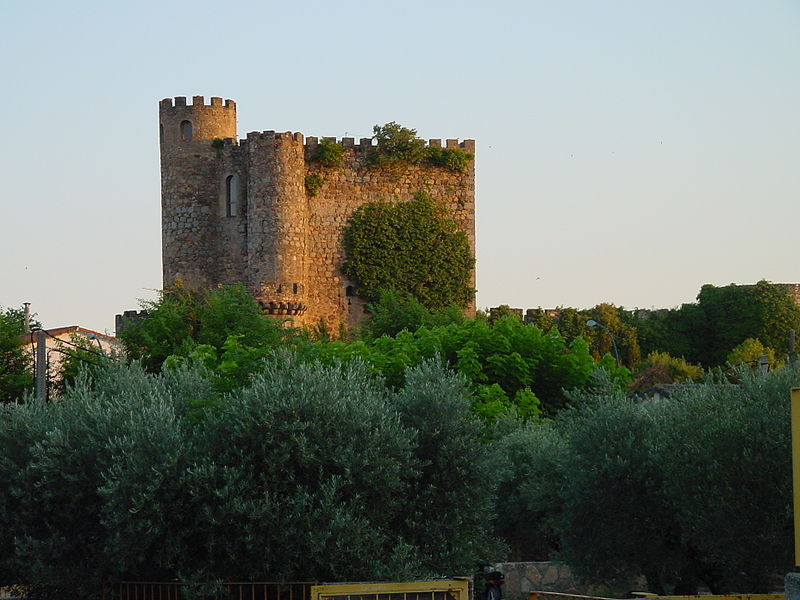
With its long and sometimes tumultuous history, through the ages Spain has proved to be about as spooky and haunted as any place on earth, with lore ranging from Galician meigas (witches) to ghostly Moorish damsels. And Madrid may have the only public statue of Lucifer in the world (the Fallen Angel, in Retiro Park). Here are a few key haunted spots you can visit, if you dare!
Famous Fantasmas (Ghosts)
Starting off in Madrid, right on downtown’s Plaza de Cibeles, the grand 19th-century Palacio de Linares is today devoted to events, exhibitions, and conferences, especially those promoting cultural exchange between Spain and the Americas (and is open for tours). But it’s rumored to be haunted by the ghosts of its first owners, the marquis and marquise of Linares, and their young daughter. The story goes that they married without realizing they were half-siblings but got permission from the pope to live together as long as they didn’t have children (the story also goes that they of course couldn’t help themselves, and had a daughter, whom they pretended was adopted).
If you visit Madrid’s wonderful Reina Sofía museum of modern art, it might interest you to know that even in its previous life as the Hospital de Atocha, built in the 18th century, it was afflicted with poltergeistly goings-on at night. When the building was being renovated as a museum in the 1980s and 90s, gruesome remains were found from its history as a hospital and as a place of torture and execution during the civil war of the 1930s. Even today, some employees have reported seeing ghostly nuns in the courtyards and hallways and hearing the clack of their rosaries; lifts moving on their own; and apparitions seated on benches.
Sixty kilometers (36 miles) southwest of the capital, in the town of San Martín de Valdeiglesias, the doughty 14th-century Castillo de la Coracera (top) is nowaways a wine museum and events center, but there have been strange goings on here over the years, with reports of murders and such. One of the more recent owners was an eccentric millionaire, a latter-day Marquis de Sade type who dabbled in the occult, held orgiastic parties, kept pet lions, and was found one fine day shot to death in bed, a supposed suicide. Paranormal reports include disembodied voices, screams coming from the chapel, levitating rocks, and an apparition in chain mail patrolling the battlements.

Keep heading southwest a couple hundred more kilometers and you’ll reach the historic city of Cáceres, which besides an extraordinary UNESCO World Heritage old town and various other allures has a prominent haunted house of its own. The Yusuf Al Burch Museum is a house dating from the 12th century, when this city was Moorish Alkazares, and was painstakingly restored in the 1970s. Some visitors say they have caught glimpses of a spirit which supposedly lingers to this day, of the daughter of an emir who would tryst with her Christian lover here, and when caught was immured alive behind one of the walls by order of her father (nice dad!). Banging doors, windows that open by themselves, and unexplained nocturnal noises have also been reported.
Another unfortunate lover is the protagonist at the Casa de Castril, in the old Albaicín district of Granada. Currently the site of the city’s Archaeological Museum, it’s a 16th-century Renaissance gem built by the secretary to Ferdinand and Isabella. The legend here involves the secretary’s daughter and her page, who was hanged by her also nasty ol’ dad on suspicion of violating her honor; the young lady was then locked up for good and took her own life by poison. Today some have reported seeing a “lady in white” with a candle; alarms and machinery going off inexplicably; and feeling the “breath” of one of the prize sculptures, a Roman bronze of a chap in a toga.
Which Witches?
Up in the the northern reaches of the of Spain’s ethnically Basque autonomous community of Navarre, near the French border, the shire of Xareta is home to a town called Zugarramurdi, an hour’s drive from San Sebastián and just slightly more than that from Pamplona. And in the 17th century, it famously was a hotbed of witches – and today the legacy lives on, with a Museo de Brujas (Witches Museum) and a cave (above) where covens were supposed to have met.
Villages of the Damned
In some parts of Spain there are ghost towns – which is usually pretty creepy to begin with, but several have gotten an especially haunted rep. In a Basque enclave in the north of the Castilla y León province of Burgos, one called Ochate (above) has become a byword for the paranormal. Dating back to at least the 11th century, the last inhabitant left in 1934, and the only folks who visit now are vandals and the curious. People have reported strange sounds as well as lights including luminous halos; and sightings of UFOs and strange robed beings. People have also disappeared here (one was even found dead and inexplicably carbonized).
Another, La Mussara in Catalonia‘s Tarragona province about 100 km (67 miles) inland from the eponymous capital city, has been around since at least the 12th century but abandoned since the late 1950s, a victim of the phylloxera which ravaged local vineyards. Here amid its eight ruined buildings, too, tales have arisen of unexplained disappearances, magnetic anomalies, UFOs, spectral presences and space/time disturbances. In fact, sometimes it’s enveloped in dense fog that disorients visitors and leads them to get lost, and others to return after a short visit to find they had been gone hours. The village is thought by more than a few to be a portal to other dimensions.
images | Dirección General de Turismo/Comunidad de Madrid, Mario Modesto

Comments